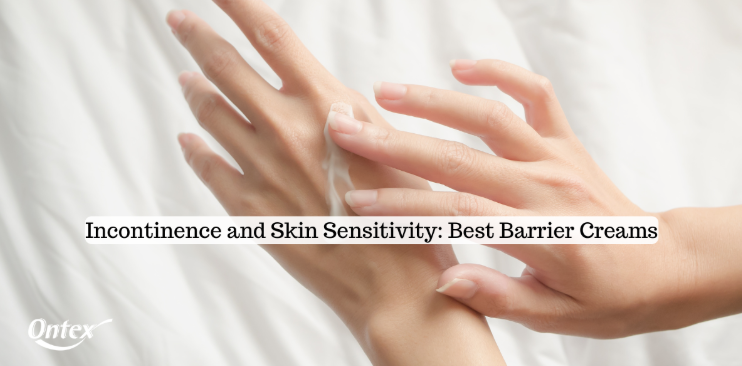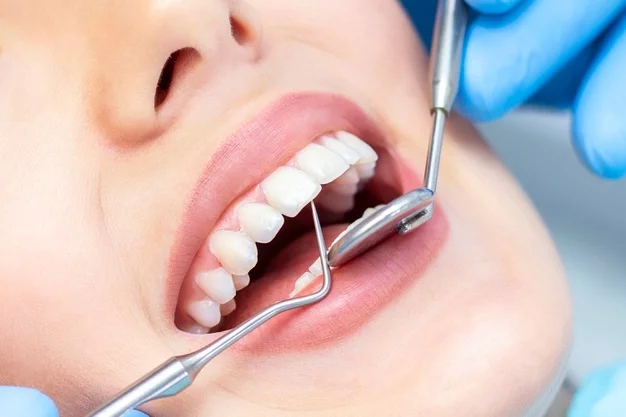Have you noticed redness or soreness that won’t go away? That’s incontinence taking a toll on your skin barrier.
Left unmanaged, this damage affects your comfort and confidence daily. At Ontex Healthcare, we create continence care products that help protect skin health and preserve dignity.
We’ve seen how the problem can get worse over time if nothing is done about it. And if you already have dry skin or sensitive skin, you’re dealing with an even tougher situation.
But the right barrier cream creates a protective barrier against excess moisture. And we’ll share our tips and expertise to choose and use skin care products properly, even when your skin feels fragile or already irritated.
Let’s start with how incontinence affects the skin barrier.
Why the Skin Barrier Breaks Down With Incontinence
Your skin works hard to protect you every day without you even noticing. But when incontinence becomes part of life, that protection starts to fail in ways that aren’t always obvious. Here’s what you need to know about your skin and why constant moisture causes so much trouble.
What Is the Skin Barrier and Why Is It Important?
Picture your skin’s outermost layer, the stratum corneum, like a sturdy brick wall. This layer keeps harmful bacteria from getting in while trapping moisture where your body needs it.
As long as it functions well, your skin remains healthy and comfortable. But when dampness sticks around too long, those protective “bricks” start to crumble.
How Incontinence Disrupts the Skin’s Natural Defences
The damage starts simply but builds up fast. Even small amounts of urine or sweat on the skin can start breaking down that protective outer layer. Once it’s soft, irritation sets in easily.
From there, your skin becomes even more sensitive to rubbing and bacteria. People with dry skin or sensitive skin see this happen even quickly. Without proper care, that irritated skin can turn into pressure sores or incontinence-associated dermatitis.
Protecting Skin and Fixing Early Problems
Different skin problems need different solutions, so let’s sort this out. If you see light redness, it means you need to start prevention with a solid barrier cream and a gentle washing routine.
But broken skin or open wounds are a different story. That’s when you need proper wound care, and health professionals should guide you through treating infections or serious damage.
Now that you know what’s causing the problem, let’s talk about finding a barrier cream that will work for your skin.
How to Choose The Best Barrier Cream for Your Skin
A good barrier cream does two important jobs: it stops moisture from damaging your skin and helps repair any damage that’s already there. But not all barrier creams do what they promise, and picking the wrong one leaves you dealing with the same problems.
Focus on these pointers when you’re reading those product labels.
Main Active Ingredients to Look For
Some ingredients create that protective shield, others help repair damage, and the really good products do both at once. The ingredients list on the back of the tube tells you everything about how well it’ll work:
- Zinc oxide: This ingredient creates a thick shield that pushes away urine and moisture while calming down redness and swelling.
- Dimethicone: You’ll notice this one forms a breathable water repellent barrier without leaving behind that heavy, greasy feeling on your skin
- Petrolatum: Looking for something that locks moisture in? This stops further irritation brilliantly, especially if you’ve already got dry skin
- Hyaluronic acid: Your skin cells get a hydration boost from this, which keeps them healthy and speeds up how quickly damaged areas heal
Each of these works differently, so better barrier creams mix a few together. This way, you get both protection and healing in one product, saving time and money.
Match the Product to the Skin Condition
What’s happening with your skin right now should tell you which cream to grab.
For inflamed or broken skin, zinc oxide-based products offer the strongest protection and healing properties. But if your skin is sensitive to begin with, we recommend gentler formulations with dimethicone that won’t cause further irritation.
You’ll also probably want thicker, longer-lasting creams for overnight protection, but lighter products work fine for daily use with mild incontinence.
How to Use Barrier Creams Effectively
Now, the application technique is just as significant as choosing the right product.
Always start by cleaning the area gently with products that maintain your skin’s pH level. Before applying cream, pat the area completely dry (never rub the area). Then spread a thin, even layer over the affected area so it absorbs properly.
Note that most quality barrier creams do not require rinsing. That’s why they are easy to use with incontinence products and protect your skin between changes.
Ready to Improve Your Everyday Life?
Looking after your skin when dealing with incontinence isn’t something people chat about over coffee, but it’s more important than most realise.
One way to make it easier is by finding reliable skin care products locally, so you’re not waiting weeks for deliveries or guessing about quality. Your local chemist might carry solid options, and health professionals like us can point you towards specific products that match what your skin needs right now.
We also stock barrier creams made specifically for Australian conditions and different skin types. Visit Ontex Healthcare to see how we can make skin care easier for you.





